Lake Champlain
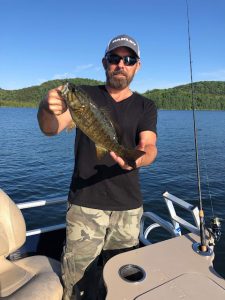
Donnie
Donnie is a founder at Basshogg, an avid bass fisherman and cottager.
- May 7, 2023
- 12:51 am
- No Comments
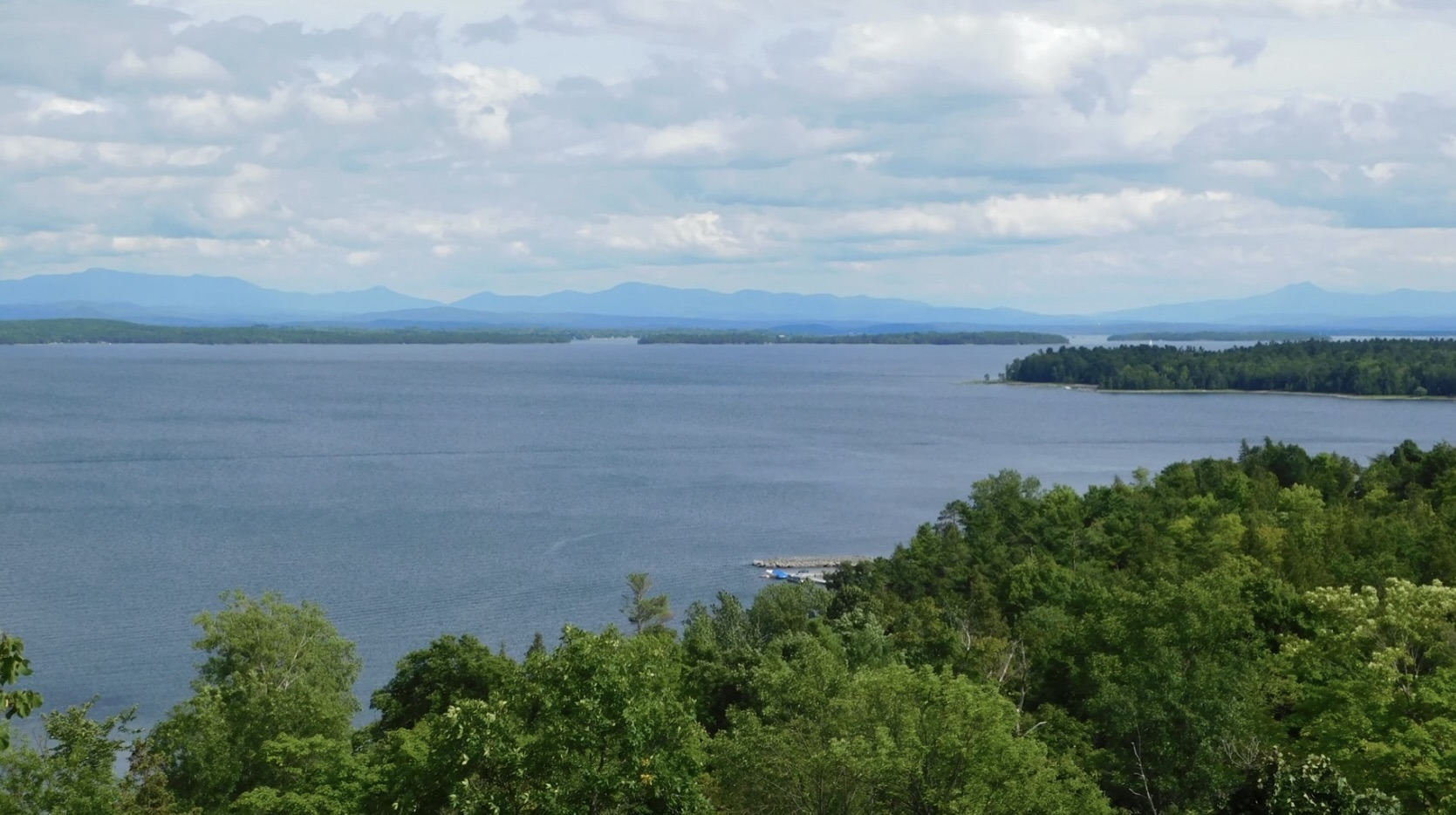
Location: Lake Champlain sits primarily between New York and Vermont, and stretches north into Quebec. Click here to check it out on Google Maps.
Size: 435 Sq mi, 120 miles long, 600 miles of shoreline.
Depth: Max Depth 400 ft.
Species: Largemouth Bass, Smallmouth Bass, Atlantic Salmon, Black Bullhead, Black Crappie, Bowfin, Brook Trout, Brown Bullhead, Brown Trout, Burbot, Chain Pickerel, Channel Catfish, Common Carp, Lake Sturgeon, Lake Trout, Longnose Gar, Muskie, Northern Pike, Rainbow Trout, Rock Bass, Steelhead, Walleye, Sauger, Suckers, Yellow Bullhead, and Yellow Perch.
Largest Bass Caught: 7 lbs 3 oz Largemouth Bass
About Lake Champlain
Lake Champlain is situated in a region of stunning natural beauty. Flanked by the Adirondack Mountains to the west and the Green Mountains to the east. The valley in which the lake is situated was formed by glacial action during the last ice age. Leaving behind a picturesque landscape of rolling hills and rocky outcroppings.
The lake itself is a glacially-formed freshwater lake that is over 12,000 years old. It is fed by a number of rivers, including the Ausable, Lamoille, Winooski, and Saranac. It’s drained by the Richelieu River, which flows northward into the St. Lawrence River.
The lake is dotted with many islands, the largest of which include Grand Isle, North Hero, and South Hero. The islands are home to a number of unique ecosystems and are popular destinations for fishing, boating, and hiking.
In addition to its natural beauty, Lake Champlain is also rich in history. Having played an important role in the Revolutionary War and the War of 1812. The lake was also an important transportation route for trade and commerce in the 19th century. Today, it remains a popular destination for tourists and outdoor enthusiasts. Offering a wide range of recreational activities and stunning scenery to enjoy.
It boasts a maximum width of 14 miles (23 km) and covers a total area of 435 square miles (1,127 square km). With 55 square miles (142 square km) of islands and 600 miles of shoreline, including popular spots like Grand Isle, Isle La Motte, and Valcour Island. With over 90 species of fish, Lake Champlain is widely recognized as one of the best bass fishing lakes in the Northeast. Having recently ranked sixth in the region by Bassmaster Magazine.
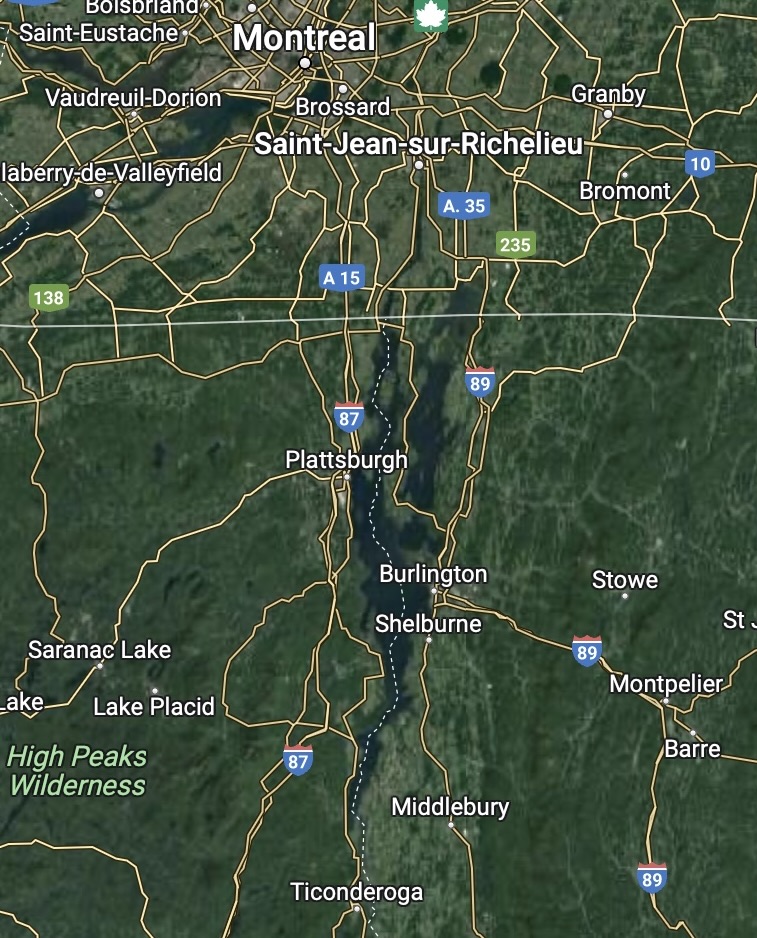
Boat Launches
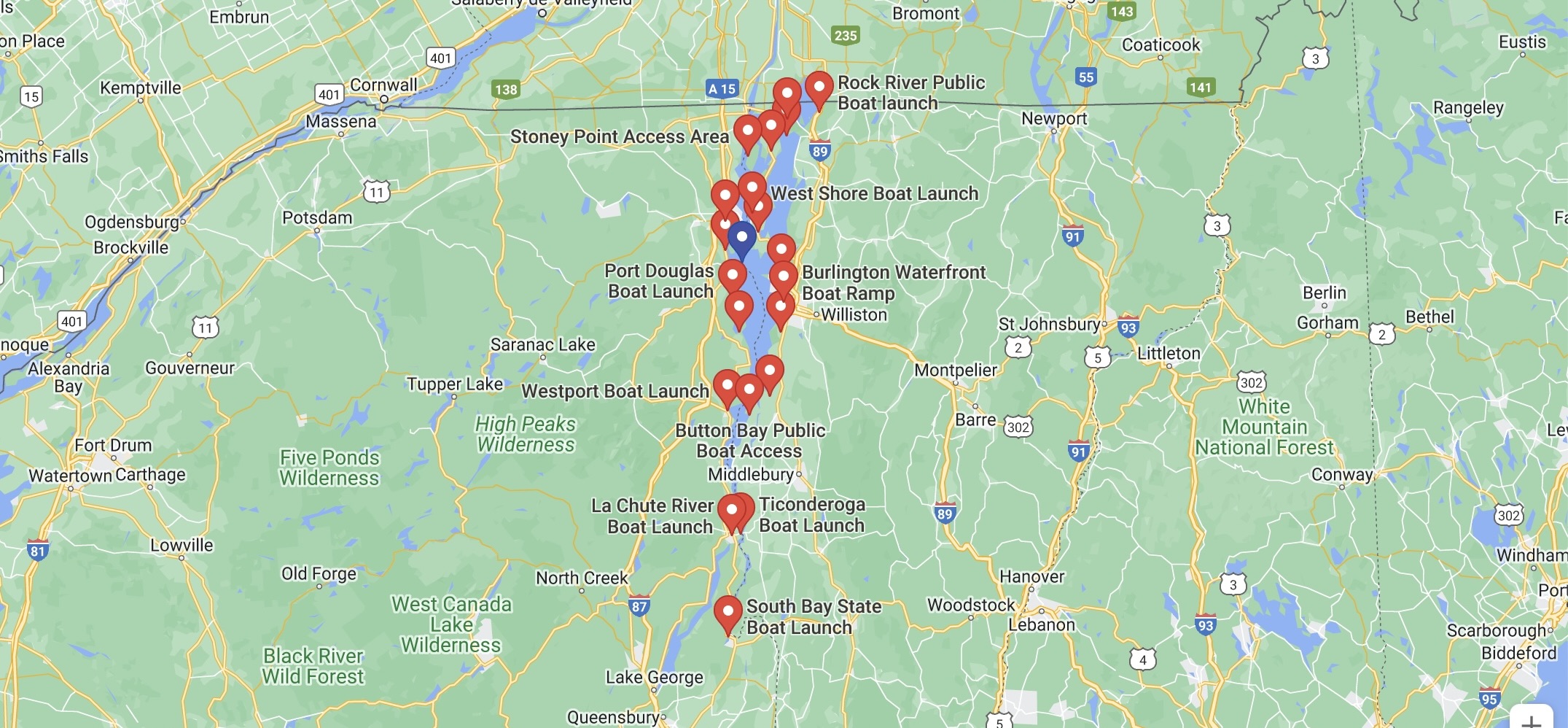
Catching Bass on Lake Champlain
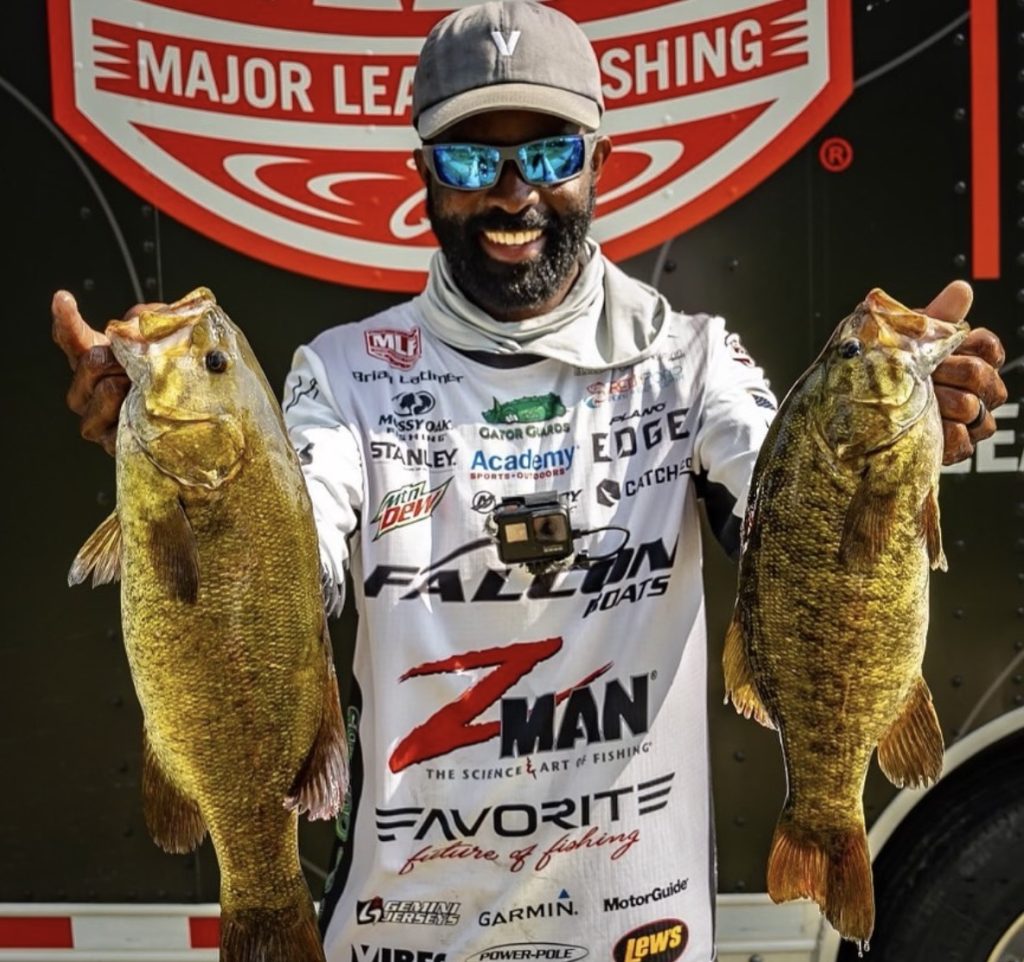
Largemouth Bass: The lake is home to a healthy population of largemouth bass. They can be found in both shallow and deep waters throughout the lake. When fishing for largemouth bass on Lake Champlain, it is important to pay attention to the water temperature and other environmental factors, as these can have a big impact on the behavior of the fish.
In the spring and early summer, when the water is still cool, largemouth bass can often be found in shallow water near weed beds and other cover. Topwater lures, such as poppers and buzzbaits, can be especially effective during this time of year. As the water warms up and the fish move to deeper water, soft plastic baits, jigs, and crankbaits can be effective. Target largemouth bass around structure like rocky points, submerged logs, and drop-offs.
In the fall, as the water cools down again, largemouth bass often return to shallower water. They can be caught using similar tactics to those used in the spring.
Smallmouth Bass are abundant in the lake and can be caught using a variety of techniques.
In the early spring, smallmouth bass can often be found in shallower water. Especially around rocky areas and points. Topwater lures like poppers and
stickbaits can be effective during this time, as well as jerkbaits and crankbaits that mimic the smallmouth’s natural prey.
As the water warms up and the fish move to deeper water, soft plastic baits like drop shot rigs, Carolina rigs, and tube baits can be effective for targeting smallmouth bass around structure like rocky points and ledges. Jigs, spinnerbaits, and crankbaits can also be effective for targeting smallmouth bass in deeper water. Smallmouth often return to shallower water in the fall, and can be caught using similar tactics to those used in the spring.
Lake Champlain Hot Spots
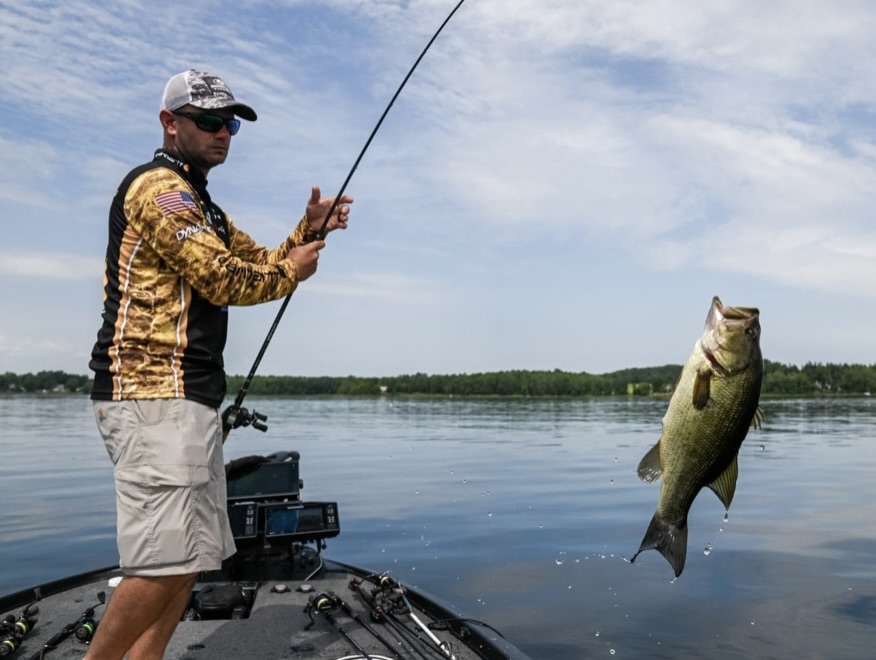
If you follow any of the big tournaments on Lake Champlain then you likely know. The best largemouth territory is roughly defined by the Champlain Bridge. The shallows south of the bridge are full of tournament winning bass. Launch your boat right in the middle of the action from either the Port Henry or Ticonderoga state launch sites. As a general rule, smallmouths are more dominant in the lake’s northern half, while largemouths are most common in the southern half. But don’t take that rule too seriously, as the two species cohabitate in many areas. Bass weighing 2 to 3 pounds are average for both species, and it’s not uncommon to catch smallmouths over 5 pounds and largemouths over 6. The south end is shallower, weedier, and warms more quickly, and bass might start spawning here significantly earlier than in the north end of the lake. Here’s some can’t miss spots on Lake Champlain to find bass!
Rouses Point
Just south of the Rouses Point Bridge and stretching south past Isle La Motte, the contours flatten out a bit, and abundant rock, grass and bait make for arguably the best smallmouth fishing on the lake. There are largemouths as well, but places such as Point Au Fer (point leading to King Bay) have hundreds of yards of prime offshore rock and grass that are perfect for smallmouths. You can expect a lot of brown weight to come from this part of the lake.
Missisquoi Bay
The far northeast corner of Champlain is a special one. There, the Missisquoi River flows into Missisquoi Bay. It’s home to some of the best largemouth action in the entire north end. The river delta can be very productive, and the river itself holds fish as well. The bay away from the river can also be very good. There’s a lot of shallow rock and grass, and the water is a little dirtier than the rest of the north end. All that makes it a prime place for largemouths (and some smallmouths) to live and feed!
The Inland Sea and the North End
As Champlain runs north, the lake begins to broaden and is broken up by a string of big islands that essentially divide the lake into the Inland Sea, which is solely in Vermont, and the upper reaches of the main lake, shared by Vermont and New York. Mallets Bay is nestled at the south end of the islands, and it is geographically pretty unique, with more bluffs and cliffs that drop into deep water than the rest of the north end, but the fishing there isn’t too different from elsewhere up north.
The Gut, Carry Bay and the Alburg Passage
There are three ways to get from Plattsburgh to the Inland Sea. The first is to run south below the islands and cross through between Mallets Bay and South Hero (the southernmost of the big islands). The other two are passages between the islands. The closest and easiest for anglers is the Gut. North of that, the Alburg Passage leads up toward the north end of the Inland Sea and the mouth of Missisquoi Bay. Both Carry Bay and the Gut are loaded up with grass and largemouths, but the openings to the big lake also have plenty of smallmouths on them. Because of the old railroad causeway that runs up the islands, the current flowing out of the Inland Sea (east to west at the causeways and turning toward the north) is concentrated at a few gaps. Those gaps concentrate bait and bass. They’re well-known areas, but they’re sure to produce plenty of bites.
Summary
In conclusion, Lake Champlain is truly a paradise for bass fishing enthusiasts. If you have any way at all of making it onto this lake then make it happen! With its breathtaking scenery and abundant fish population, it offers a unique and unforgettable fishing experience. Armed with the right equipment, techniques, and knowledge, anyone can have a successful and enjoyable time fishing for bass on this remarkable lake. Whether you are a seasoned angler or a beginner, Lake Champlain is definitely a destination worth considering for your next fishing adventure. So pack your gear, head to the lake, and get ready for some exciting and rewarding bass fishing!
Check out the Bass Blogg for information about other Bass fishing lakes and more!